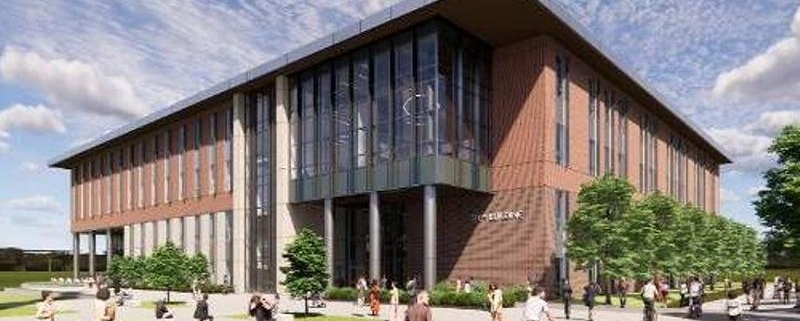UNT Dallas To Build $100 Million Healthcare Education Building
UNT Dallas just broke ground on a $100 STEM complex on its campus in southern Dallas in an effort to improve the healthcare workforce pipeline in North Texas.
The four-story facility will include 18-20 classrooms, nine biology and chemistry teaching labs, three research labs, and a large event venue. The plans include work areas, faculty offices, a student STEM center, a public green space, and a Joint Admission Medical Program space to provide resources for those considering medical school.
The sustainably-built building will provide space for pursuing healthcare careers such as medical, nursing, and pharmacy schools.
“When completed, this building will stand as the most consequential addition to the UNT Dallas main campus, bringing expanded opportunities for our current and future students to be trained for significant healthcare careers,” said Bob Mong, UNT Dallas president. “For employers, our graduates will help solve urgent healthcare shortages in our community. This is a win for our students, our industry partners, and the future of healthcare in North Texas.”
Construction is set to begin within the month on the Stantec and Harrison Kornberg-designed building, allowing students to take advantage of what is a growing industry with shortages at nearly every level. The Bureau of Labor Statistics says STEM-related healthcare positions pay more than average and are projected to grow nearly 11 percent in the next decade. According to the Health Resources & Services Administration, the US needs more than 17,000 additional primary care practitioners and 8,200 mental health practitioners.
“This is a tremendous day for UNT Dallas. I’m thankful and grateful,” said Betty Stewart, UNT Dallas provost. “This STEM building will be transformational to our campus.”
The growing campus is being built to empower and provide upward mobility to diverse learners, and the school’s population reflects that goal. According to Data USA, the enrolled student body is 47.6 percent Hispanic, 26.4 percent Black, 13.9 percent White, and 2.6 percent Asian. Nearly half (41.5 percent) of the UNT Dallas population are first-generation college students.
Healthcare shortages are more acute in communities of color. Black people constitute 13 percent of the US population but only 5.7 percent of physicians. An April 2023 study published in JAMA Network Open found that every 10 percent increase in Black primary care physicians in a county increased life expectancy by one month for Black patients. More Black physicians in a region also reduce the gap between life expectancy for White and Black Americans, which currently sits at six years nationwide.
The building is set to open in the spring of 2026.
Source: D CEO Magazine


